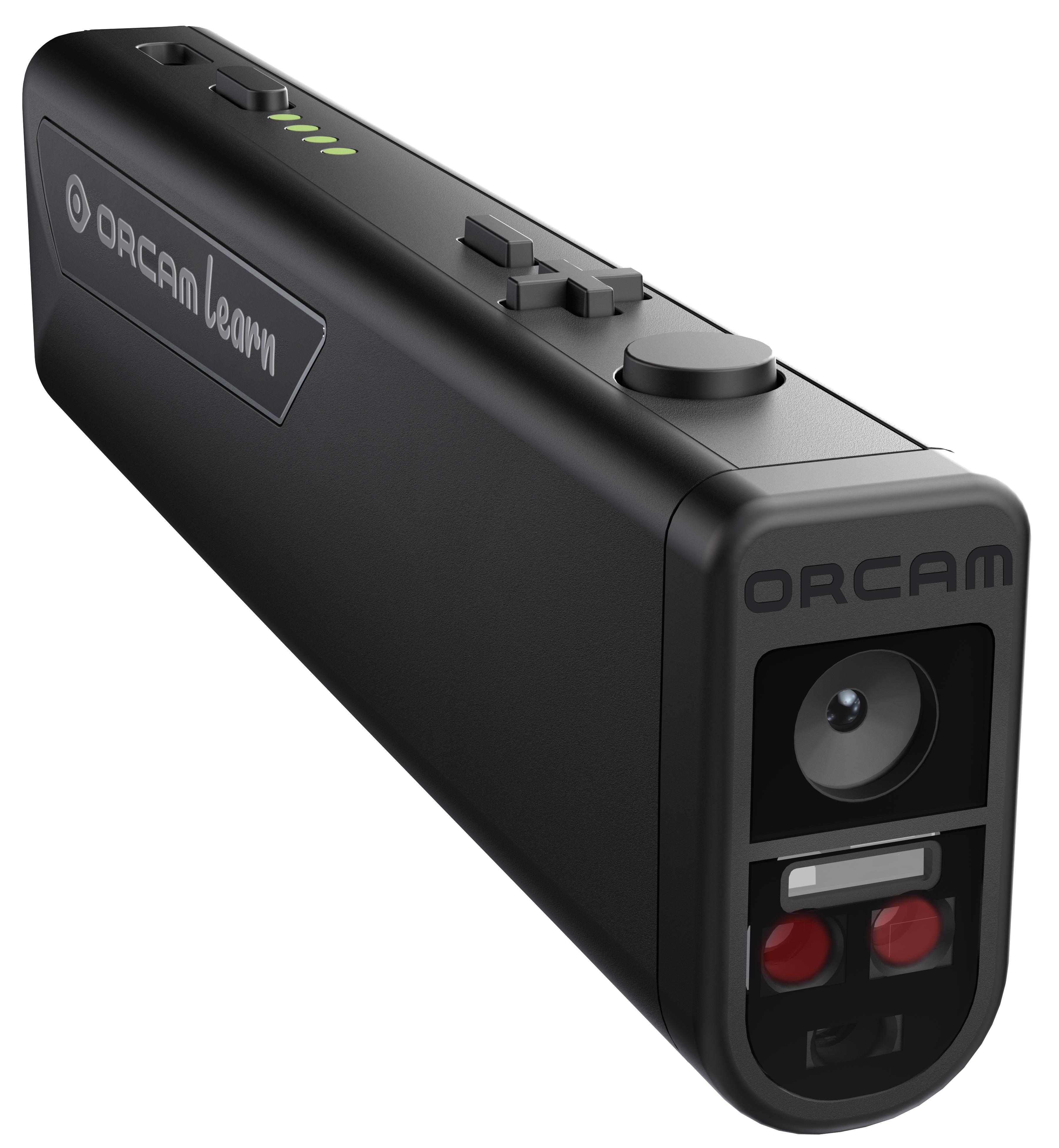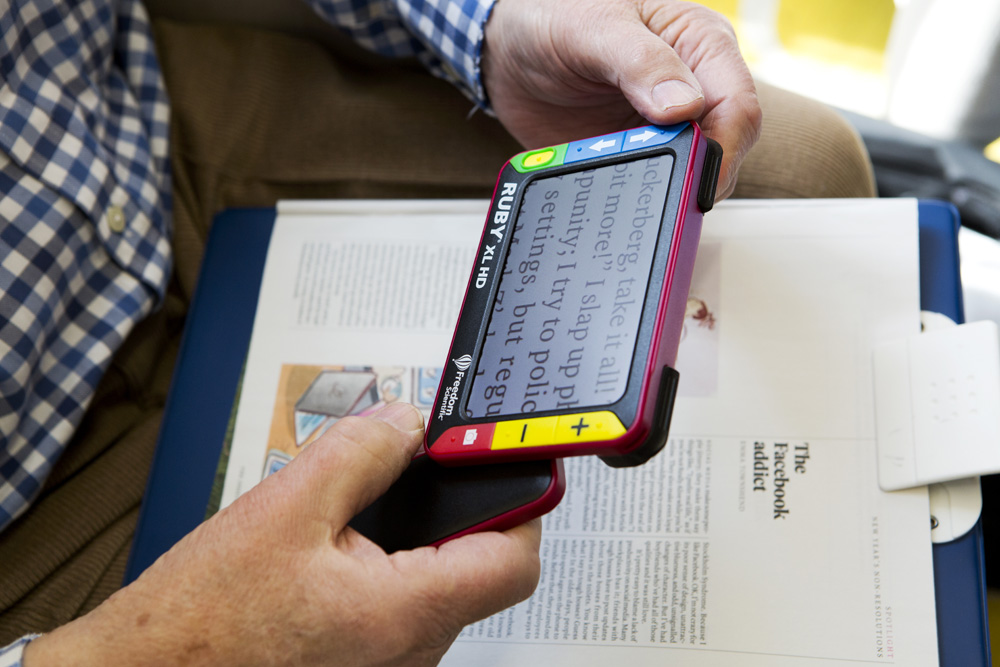Speech-to-Text Devices for Low Vision: Closing the Communication Gap
Empowering Self-reliance With Assistive Technology for the Blind
The assimilation of assistive modern technology right into the lives of individuals with visual problems represents a considerable development in promoting self-reliance and self-sufficiency. From innovative screen readers to advanced clever canes, these tools not just enhance everyday navigation and communication however also equip customers to involve meaningfully in different facets of life. As we explore the myriad benefits and real-world applications of these modern technologies, it comes to be important to take a look at the underlying factors that add to their effectiveness and the potential for future growths in this crucial field.
Overview of Assistive Technology

The advancement of assistive innovation is grounded in principles of inclusivity and empowerment. Advancements in software application, hardware, and sensory improvements provide customers with choices tailored to their particular requirements. From screen visitors that transform message to speech, to tactile tools that communicate details with touch, these tools change the method individuals engage with their environments.
In addition to functional applications, assistive innovation promotes greater social incorporation and involvement in numerous sectors, consisting of education and learning and employment (Speech-to-text devices for low vision). As r & d remain to advance, the possibility for assistive modern technology to better improve the lives of visually damaged individuals stays promising, leading the method for an extra fair society where everyone can flourish
Types of Assistive Devices
A selection of assistive gadgets have actually arised to sustain individuals with visual disabilities, each made to meet details requirements and boost everyday performance. These devices vary from low-tech options to modern innovations, providing diverse choices for customers.
Low-tech devices consist of magnifiers and large-print materials that assist in reading and writing. Braille devices, such as Braille stylus pens and slates, allow tactile reading and communication. Orientation and wheelchair aids, like white walking canes, aid customers browse their environment safely.
On the greater end of the spectrum, electronic magnification systems and display visitors use significant support. Digital magnifiers permit individuals to expand text and pictures on displays, while display readers convert digital material right into manufactured speech, helping with access to information on smart devices and computers.
Smart device applications likewise play an important role, supplying features like text recognition and navigating help. Wearable technology, such as wise glasses outfitted with increased fact, is becoming an encouraging device to enhance situational awareness.
Advantages of Assistive Innovation
The integration of assistive technology substantially boosts the high quality of life for people with visual problems. These innovations encourage individuals by advertising freedom, enabling them to navigate their settings extra successfully and perform daily jobs with higher convenience. Screen readers and magnifying software program enable people to accessibility digital details, cultivating specialist and educational chances that might have previously been out of reach.
Additionally, assistive tools such as wise canes and general practitioners applications offer real-time navigation aid, enhancing flexibility and safety. This raised autonomy not only visit this web-site boosts self-esteem but likewise urges social engagement, allowing individuals to get involved even more totally in their neighborhoods.
Assistive technology likewise helps with interaction, aiding customers get in touch with others with voice acknowledgment and text-to-speech applications. This capacity is crucial for keeping relationships and accessing important information.
In addition, the personalization alternatives available with several assistive technologies guarantee that individuals can customize tools to their specific requirements, better boosting use and efficiency. Overall, the benefits of assistive modern technology for individuals with aesthetic impairments are profound, advertising a more inclusive society where everyone can pursue their aspirations and goals.
Study and Success Stories
Highlighting the transformative effect of assistive technology, numerous study highlight how individuals with aesthetic problems have efficiently integrated these devices into their day-to-days live. One engaging instance includes an university student who used display analysis software application to navigate online sources and scholastic materials successfully. This modern technology not only facilitated her education however likewise improved her self-confidence in joining conversations and group projects.
An additional study features a professional who uses a smartphone application developed for navigating and object acknowledgment. By utilizing this application, he has actually regained freedom in both his personal and job atmospheres, enabling him to commute independently and involve with coworkers extra effectively.
Furthermore, a retired person shared her experience with braille e-readers, which enabled her to access a vast variety of literary works and stay connected with her area with publication clubs.
These success tales underscore the critical function of assistive technology in cultivating independence, boosting top quality of life, and advertising social assimilation for people with visual impairments (Assistive technology for the blind). By welcoming these cutting-edge tools, individuals can get rid of click over here challenges and seize opportunities that add to their professional and personal gratification

Future Fads in Assistive Innovation
Advancement in assistive innovation is poised to redefine the landscape of support for people with aesthetic visit here disabilities. Emerging trends stress the assimilation of expert system (AI) and machine learning, which boost the performance of gadgets that assist with navigation and information access. AI-driven applications are currently capable of interpreting visual information in real-time, enabling customers to involve with their environment a lot more independently.
Additionally, the growth of wearable technology is progressing swiftly. Smart glasses furnished with enhanced truth (AR) can offer audio descriptions of environments, changing just how customers engage with public areas. These gadgets not just advertise freedom however likewise foster social inclusion.
Additionally, the Internet of Things (IoT) is making homes smarter, allowing for seamless connectivity in between everyday devices and assistive tools. This connectivity empowers individuals by making it possible for computerized responses and voice-activated controls tailored to individual demands.
Conclusion
In final thought, assistive innovation plays a crucial role in empowering individuals with visual impairments by improving their self-reliance and interaction with their surroundings. The diverse variety of applications and gadgets offered not just assists in navigating and communication but additionally advertises social integration and opportunities for personal and professional growth. As advancements continue in this area, the possibility for boosting the lifestyle for those with aesthetic disabilities will certainly expand, promoting higher autonomy and empowerment.
